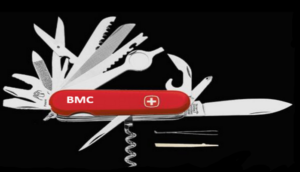By Christian Dahlen & Oana Olteanu – originally published here
Every product owner wants her new product to be successful. Every company prides itself for being innovative. Changes in software development tools and methodologies have made it much easier to build new products. New products are announced and developed at a rapid clip.
But how do we define success? In the software business, license agreements are rapidly being replaced with subscription models which need to be periodically renewed. These contracts can be cancelled at a moment’s notice if the customer does not receive value. And yet, many new offerings never get to customer mass adoption.
Clayton Christensen and Geoffrey Moore have extensively researched the failure of large, incumbent companies to innovate, particularly in the tech sector. Perhaps counterintuitively, their findings identified the inability of those companies to identify new customer needs and segments, and to change their Go-To-Market (GTM) approaches accordingly, as the main reasons of failure to innovate. Hence, innovation requires a company to think about the GTM strategy already in the idea phase.
The Business Model Canvas (BMC) and variations such as the Lean Canvas is a framework that has proven extremely useful to instill this thinking for startups. The canvas provides a holistic view of the business, and makes it easy to iterate on the sheer endless number of innovative business ideas before significant resources are being committed. In particular, the canvas forces startups to pay significant attention to identifying customer segments, marketing and sales channels, and revenue streams.
Less has been said about how larger companies can use the canvas to help innovate.
We used the Lean Canvas version for more than 70 software products across the whole stack, for new and for existing market segments, and at all stages of the product lifecycle. For each of the nine canvas tiles, we developed a set of diagnostic questions.

1. Idea stage – customer segments, problem statement, unique value proposition and unfair advantage
We found the canvas to be particularly powerful when used as the first step in theInvestment Readiness Level (IRL) assessment. The canvas is used to assess the potential of the idea before any time and effort are put into development. The problem/solution validation begins with focusing on one customer segment. The users of this customer segment are united by a shared paint point that they urgently need to solve, and they agree that the new solution will provide significantly improved value. Viability and desirability take a front seat and answer the salient question whether the idea is worth a product, and whether it is the right time to invest. The focus on the customer segment and the potential routes to market already highlights whether the innovation will be sustaining or disruptive.
2. New product development stage – solution, revenue streams, channels
Once a good idea has been pre qualified with the canvas, the team needs to iterate and find the Minimum Viable Product (MVP) based on customer feedback. The canvas keeps the team focused on the entire business model and fosters discussions among all parties accountable for the whole product. Once the MVP has been built, the focus is on scaling the customer base and developing the corresponding GTM to get to product/market fit. At that point, the canvas has been used to test the whole value chain from customer to revenue to channels. In particular, the right hand side of the canvas is combined with the IRL and can be used to assess whether a product is ready for launch.
3. Later versions and sunsetting stage – Customers, revenues, cost, and the whole canvas
For mature products, a product owner needs to decide whether she wants to continue investing, maximize margin, or sunset a product. By evaluating the customer problem to be solved, revisiting users and buying centers, and testing the unique value proposition, we found the canvas to be a useful tool to help make these decisions. For example, in one case a product extension of an existing product to a new use case promised to generate new revenues, and justified significant new investment in development, while keeping the GTM the same.
The canvas is an incredibly rich and flexible tool set which, in large companies, becomes even more effective when combined with complementary frameworks such as the three horizons model, customer development and the investment readiness levelscale. We found that the canvas is a must-have framework that helps diagnose and improve business model innovation by emphasizing that customer validation is essential for product adoption, thus for product success. Its usefulness is entirely driven by stressing the right topics at the right stage, and by asking the right questions for each of the canvas tiles.

